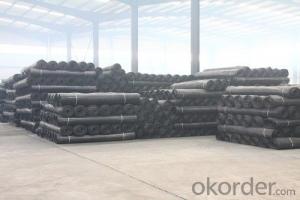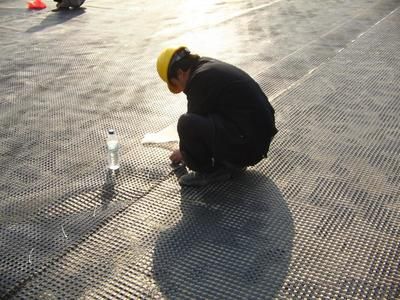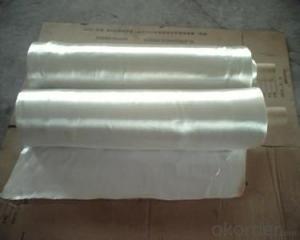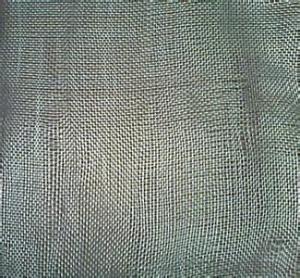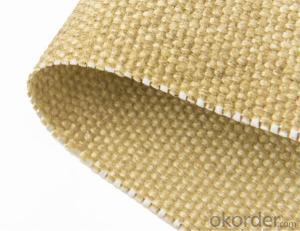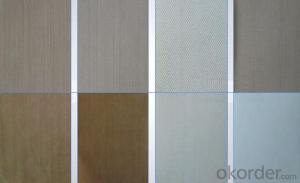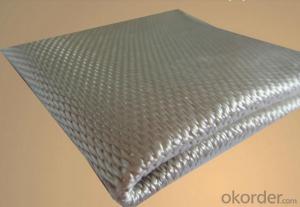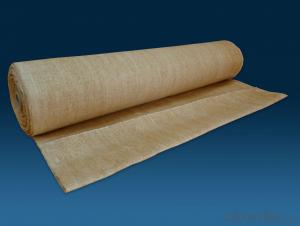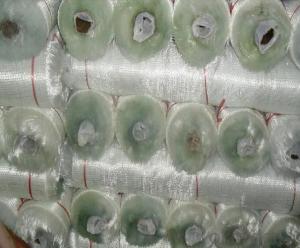Vermiculite Coated Fiberglass Fabric for River Bank - Hot Sell
- Loading Port:
- Qingdao
- Payment Terms:
- TT OR LC
- Min Order Qty:
- 1000 m²
- Supply Capability:
- 1000000 m²/month
OKorder Service Pledge
OKorder Financial Service
You Might Also Like
1.Brief Introduction
Product has high strength, low elongation, high temperature, high modulus , light weight , good toughness, corrosion resistance , long life , etc. , can be widely used in the old concrete pavement , maintenance of airport runways , dams , river banks , while slope protection , road bridge , enhancement engineering field, to the road surface can be enhanced , reinforced to prevent pavement rutting fatigue crack , hot and cold telescopic cracks and reflection cracks below , and can the pavement load stress dispersion , extending pavement life .
2.Characteristics
The high tensile strength low - elongation : Fiberglass geogrid is a glass fiber , while the high tensile strength of glass fiber , more than other fibers and ordinary metals . Its high modulus , high resistance to deformation , elongation at break of less than 3% .
No long-term creep : as a reinforcing material , with the ability to resist deformation under the load in the long-term creep resistance is extremely important, the glass fiber will not creep , to ensure that the products can long-term performance .
3.Application
ysical and chemical stability after special treatment agent coated handle , fiberglass geogrid to resist a variety of physical wear and chemical attack , but also to resist biological erosion and climate change to ensure that its performance is unaffected by the loss .
4.FAQ
good thermal stability : the melting point of glass fibers is above 1000 °C , to ensure the stability of the glass fiber geogrids to withstand high temperature in a paving job .
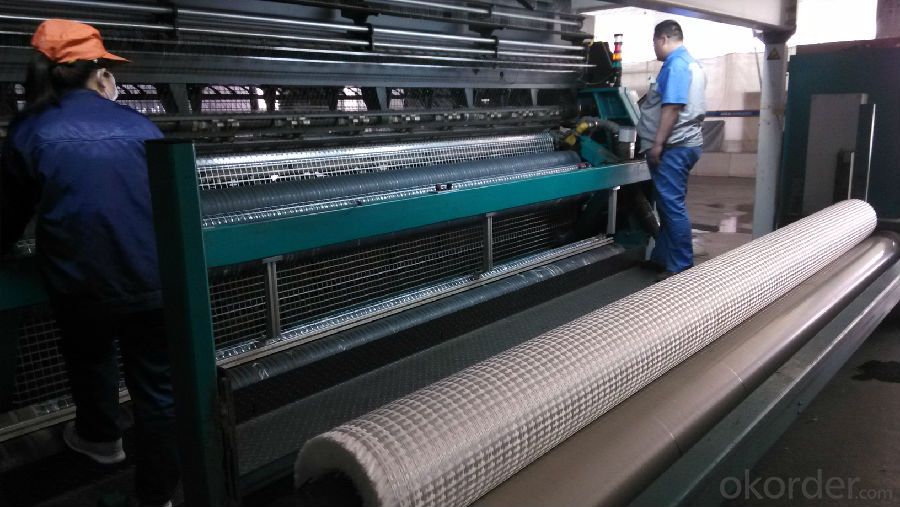
- Q: How is fiberglass fabric used in the production of insulation tapes?
- Due to its excellent thermal insulation properties and durability, fiberglass fabric is frequently utilized in the manufacturing of insulation tapes. Typically composed of woven glass fibers, this fabric offers a high level of heat resistance and insulation. When creating insulation tapes, a layer of adhesive material is applied to the fiberglass fabric. This adhesive layer aids in the tape's adherence to surfaces and creates a secure insulation barrier. The fiberglass fabric acts as a reinforcement for the adhesive, providing strength and stability to the tape. By incorporating fiberglass fabric into insulation tapes, effective thermal insulation can be achieved in various applications. It effectively prevents heat transfer, maintaining the desired internal temperature while safeguarding against external temperature fluctuations. Moreover, fiberglass fabric is resistant to moisture, chemicals, and UV radiation, making it suitable for both indoor and outdoor use. The versatility of fiberglass fabric also allows for insulation tapes to be widely utilized across different industries. They are commonly employed in HVAC systems, electrical installations, automotive applications, and construction projects. The fabric's strength and flexibility facilitate easy wrapping and sealing around pipes, wires, and other irregular surfaces, ensuring efficient insulation and preventing leaks or heat loss. In conclusion, fiberglass fabric plays a critical role in the production of insulation tapes by providing thermal insulation, durability, and resistance against various environmental factors. Its combination of heat resistance and adhesive properties makes it an ideal choice for insulating and protecting different surfaces, ensuring the effectiveness and longevity of insulation tapes.
- Q: How is fiberglass fabric used in the production of insulation papers?
- Fiberglass fabric is commonly used in the production of insulation papers as it provides excellent thermal resistance and insulation properties. It is typically woven into a thin and flexible sheet, which is then combined with other materials to create insulation papers. The fiberglass fabric helps to trap air pockets, reducing heat transfer and enhancing the overall insulation effectiveness of the papers. Additionally, it adds strength and durability to the final product, making it suitable for various insulation applications.
- Q: Is fiberglass fabric suitable for use in automotive interiors?
- Automotive interiors benefit greatly from the use of fiberglass fabric. This material is renowned for its durability, strength, and ability to withstand high temperatures and fires. These exceptional properties make it an excellent option for automotive interiors, where it can endure daily wear and tear and provide exceptional protection. In the automotive industry, fiberglass fabric is extensively utilized for various purposes. It serves as a reinforcement material for seats, headliners, door panels, and other interior components. Its remarkable tensile strength ensures that the fabric can withstand the pressure and stress placed on these parts, ensuring their longevity. Moreover, fiberglass fabric is commonly employed as a sound and heat insulator in automotive interiors. Its thermal characteristics help to reduce heat transfer, keeping the cabin cooler during hot weather. Additionally, it effectively dampens sound vibrations, resulting in a quieter and more comfortable driving experience. Furthermore, fiberglass fabric's resistance to moisture, mold, and mildew makes it an ideal choice for automotive interiors exposed to diverse weather conditions. It is also effortless to clean and maintain, which is vital for preserving the aesthetics and functionality of the interior components. In conclusion, fiberglass fabric offers a multitude of advantages that render it suitable for automotive interiors. Its strength, durability, heat resistance, and insulation properties make it a favored option among manufacturers and designers seeking to create top-notch, long-lasting, and comfortable automotive interiors.
- Q: Can fiberglass fabric be used for indoor applications?
- Yes, fiberglass fabric can be used for indoor applications. It is commonly utilized for insulation, soundproofing, and reinforcement purposes in various indoor settings such as homes, offices, and commercial buildings.
- Q: How is fiberglass fabric used in the production of insulation sheets?
- Fiberglass fabric is commonly used in the production of insulation sheets due to its excellent thermal insulation properties. The fabric is made by weaving fine strands of fiberglass together, creating a strong and durable material. In the production process of insulation sheets, fiberglass fabric is typically used as a reinforcement layer. First, a layer of fiberglass fabric is placed on top of the insulation material, which is usually made of foam or mineral wool. This fabric helps to enhance the strength of the insulation sheet and prevent tearing or damage during installation or use. Additionally, fiberglass fabric acts as a barrier, preventing the insulation material from shifting or settling over time. This helps to maintain the effectiveness and efficiency of the insulation by ensuring that it remains in place and does not create gaps or voids. Moreover, fiberglass fabric provides additional fire resistance to the insulation sheets. It has inherent fire-resistant properties, which can help to prevent the spread of flames and minimize the risk of fire hazards. This is particularly important in applications where insulation sheets are used in buildings or structures where fire safety is a concern. Furthermore, fiberglass fabric is also beneficial in terms of moisture resistance. It helps to create a moisture barrier, preventing water or moisture from penetrating the insulation material. This is crucial in maintaining the insulation's thermal performance, as moisture can significantly reduce its effectiveness. Overall, fiberglass fabric is an essential component in the production of insulation sheets, as it enhances strength, provides fire resistance, improves moisture resistance, and ensures long-lasting thermal insulation. Its versatile properties make it a reliable and widely used material in the insulation industry.
- Q: What are the electrical properties of fiberglass fabric?
- Fiberglass fabric is known for its excellent electrical insulating properties. It is a non-conductive material, meaning it does not easily allow the flow of electrical current. This property makes it suitable for various electrical applications where insulation is required. Fiberglass fabric can withstand high temperatures without losing its insulating properties, making it ideal for use in electrical insulation blankets, tape, sleeves, and other protective covers. Additionally, fiberglass fabric has a high dielectric strength, which refers to its ability to withstand high voltage without breaking down. This property is crucial in applications where the material is exposed to high electric fields, such as in transformers, motors, and generators. Furthermore, fiberglass fabric has low moisture absorption, which helps maintain its electrical insulating properties even in humid conditions. Moisture can affect the dielectric strength of materials, but fiberglass fabric's resistance to water absorption ensures its reliability as an insulating material. In summary, the electrical properties of fiberglass fabric include high electrical insulation, high dielectric strength, and low moisture absorption, making it a preferred choice for a wide range of electrical applications.
- Q: How does fiberglass fabric handle abrasion in mining operations?
- Fiberglass fabric is highly resistant to abrasion, making it an ideal choice for mining operations. Its strong and durable nature allows it to withstand the harsh conditions and abrasive materials commonly encountered in mining activities. Additionally, its low friction properties reduce wear and tear, ensuring a longer lifespan and minimal maintenance requirements.
- Q: Can fiberglass fabric be used for making soundproofing materials?
- Yes, fiberglass fabric can be used for making soundproofing materials. Its dense and fibrous composition helps absorb sound waves, reducing noise transmission and enhancing sound insulation capabilities.
- Q: Is fiberglass fabric suitable for use in food packaging?
- No, fiberglass fabric is not suitable for use in food packaging.
- Q: Is fiberglass fabric suitable for use in protective gloves?
- Yes, fiberglass fabric is suitable for use in protective gloves. It offers excellent heat resistance, durability, and protection against cuts and abrasions. Additionally, it provides insulation and is lightweight, making it a popular choice for gloves used in industries such as welding, foundries, and glass manufacturing.
Send your message to us
Vermiculite Coated Fiberglass Fabric for River Bank - Hot Sell
- Loading Port:
- Qingdao
- Payment Terms:
- TT OR LC
- Min Order Qty:
- 1000 m²
- Supply Capability:
- 1000000 m²/month
OKorder Service Pledge
OKorder Financial Service
Similar products
Hot products
Hot Searches
Related keywords
